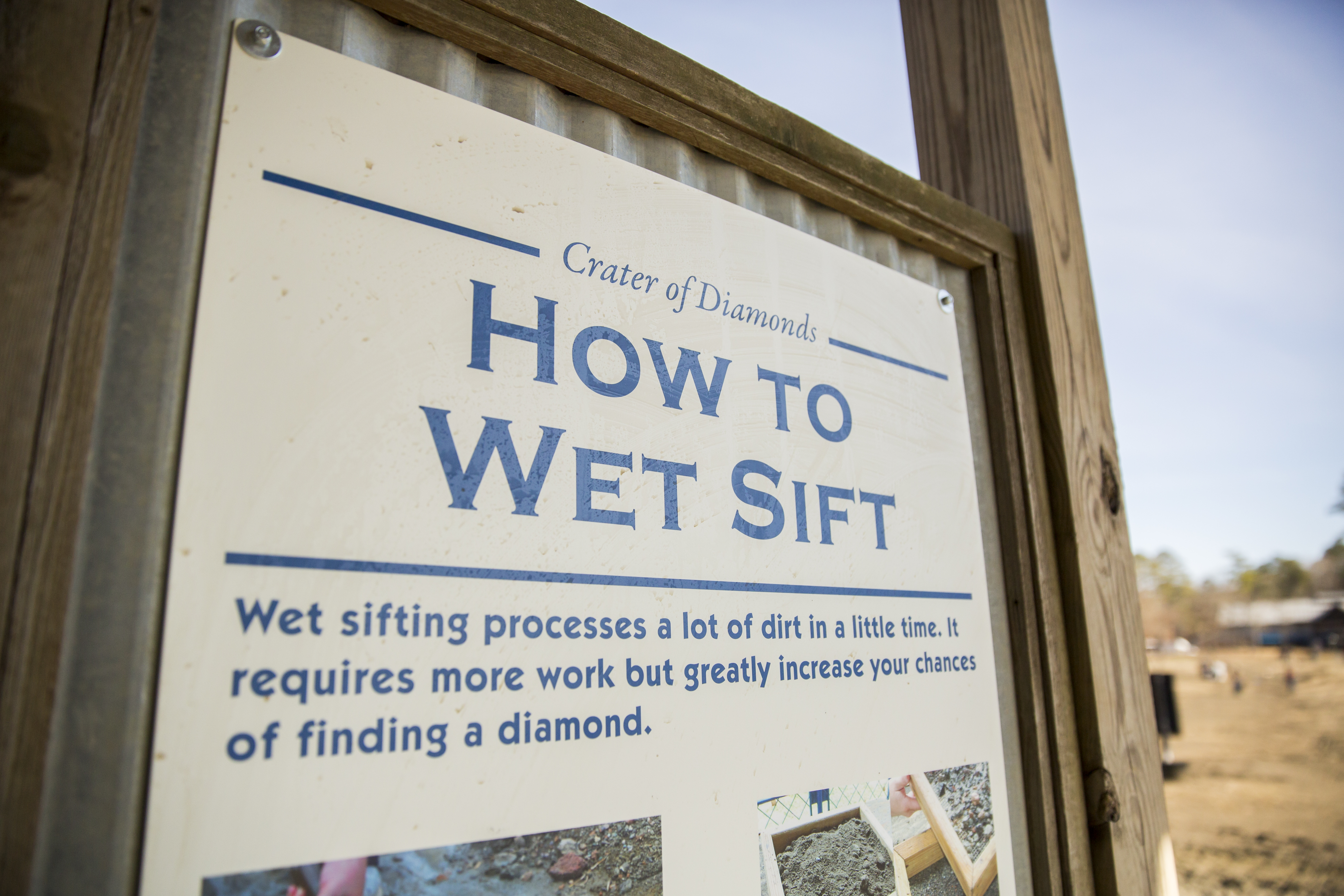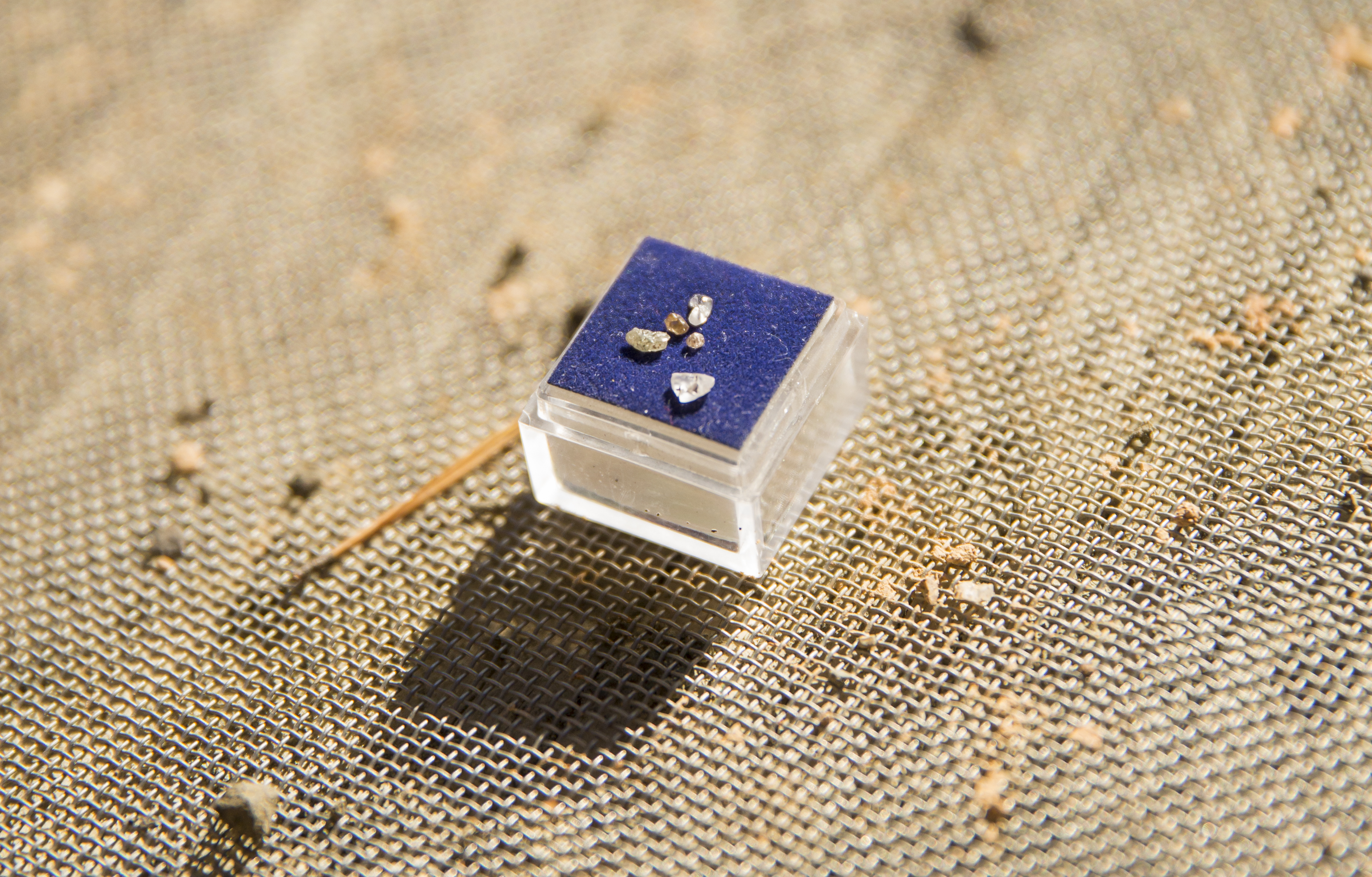Diamond Hunting Tips from Crater of Diamonds State Park
The newsletter the Crater of Diamonds State Park folks put together is filled with some pretty neat stuff. The below article by former Park Interpreter Margi Jenks was once featured and covers what rough diamonds found at Crater of Diamonds State Park look like. Enjoy!
Every day as I talk to visitors one question always comes up. “What do the diamonds look like when people find them out on our search field?” I sometimes wonder if some visitors are looking for cut diamonds, because they have never seen a rough diamond. However, I believe that Crater diamonds are sometimes even more beautiful than the average cut diamond. Our Arkansas diamonds have several characteristics that help people know when they have found a diamond.

The first and most prominent characteristic is the natural shine. When I show visitors samples of our diamonds they almost always say something like “But you must have cleaned, polished, or in some way made the diamonds shine.” However, I always reply that “the shine that you see is exactly as it came out of the diamond field. So, that shine is what you are looking for out on the search field.” Some people call the shine metallic or pearl-like. I personally believe, after seeing hundreds of diamonds, that they glow.
Many people say that a rough diamond looks shiny like a quartz crystal or a piece of glass. However, if you put either of those next to a diamond, the diamond always wins the shine contest. Also, visitors think that they won’t be able to see that shine because the diamond will be covered with dirt. However, diamonds have no static electrical charge. The crystal structure of the diamond molecules takes up all the electrons, so there aren’t any free electrons to set up a static charge. So, the shine won’t be hidden, because dirt and water do not cling to diamonds.
The second characteristic is the rounded shape of most Crater diamonds. Unlike the cube, dodecahedron and octahedron “diamond” shapes of most of the world’s diamonds, Crater diamonds are 24-sided or tetrahexahedrons. Twenty-four sides give a shape that is close to a circle, thus giving our diamonds their rounded shape. We have lots of other mineral crystals out on the field, like calcite, quartz, and barite. Those crystals all have shapes that give them sharp edges and points.

The third characteristic that generally helps us identify diamonds is the fact that you should be able to see into them. We have lots of lovely rounded jasper rocks on our search field. It doesn’t take long to be able to distinguish those jaspers. Although they are somewhat shiny, especially when wet, jaspers are opaque to very slightly translucent. Diamonds are actually clear, but they tend not to appear clear because of that natural shine. If you take a good look at a diamond set in a piece of jewelry, you will notice that you can’t see the gem’s setting through the diamond. Diamonds are cut in a way that actually enhances that natural shine. So, you should be able to see into a diamond, but it won’t look clear like a piece of glass or a good quartz crystal.
Finally, diamonds are famously hard crystals. So, a simple scratch test with anything metal, like a nail file, pocket knife, or car keys, will distinguish diamonds from the calcite and barite crystals commonly found by most visitors. If, with only a little pressure, you can scratch a white powder or break a crystal, then it is definitely not a diamond. However, most people do not realize that diamonds are also brittle. This characteristic means that with any real amount of force or pressure, like hitting it with a rock, a diamond will break. That would be a sad ending to any diamond find.
My best advice is to prospective visitors is that if you find a diamond you will probably know it. The number one comment that our visitors registering their first diamond make is “It looked different than anything else I had seen out there all day.” And, that difference is the beautiful, natural shine.
